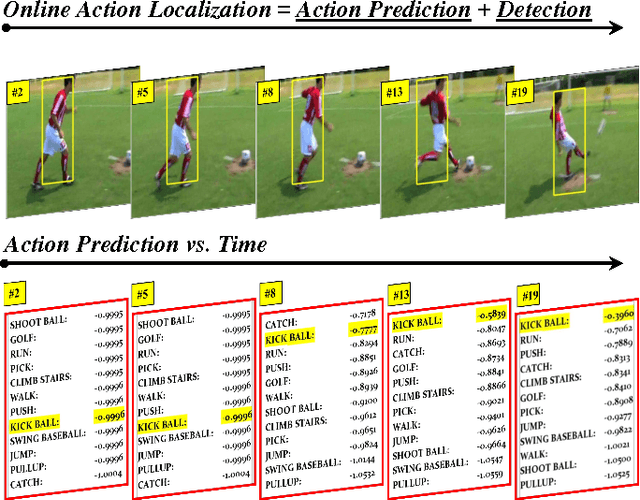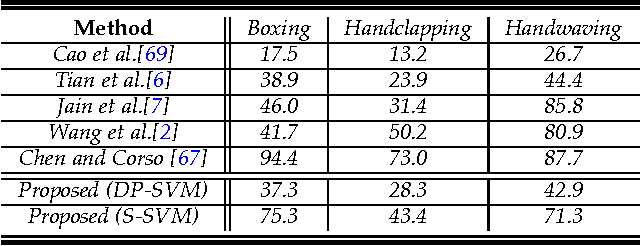Khurram Soomro
Online Localization and Prediction of Actions and Interactions
Dec 04, 2016



Abstract:This paper proposes a person-centric and online approach to the challenging problem of localization and prediction of actions and interactions in videos. Typically, localization or recognition is performed in an offline manner where all the frames in the video are processed together. This prevents timely localization and prediction of actions and interactions - an important consideration for many tasks including surveillance and human-machine interaction. In our approach, we estimate human poses at each frame and train discriminative appearance models using the superpixels inside the pose bounding boxes. Since the pose estimation per frame is inherently noisy, the conditional probability of pose hypotheses at current time-step (frame) is computed using pose estimations in the current frame and their consistency with poses in the previous frames. Next, both the superpixel and pose-based foreground likelihoods are used to infer the location of actors at each time through a Conditional Random. The issue of visual drift is handled by updating the appearance models, and refining poses using motion smoothness on joint locations, in an online manner. For online prediction of action (interaction) confidences, we propose an approach based on Structural SVM that operates on short video segments, and is trained with the objective that confidence of an action or interaction increases as time progresses. Lastly, we quantify the performance of both detection and prediction together, and analyze how the prediction accuracy varies as a time function of observed action (interaction) at different levels of detection performance. Our experiments on several datasets suggest that despite using only a few frames to localize actions (interactions) at each time instant, we are able to obtain competitive results to state-of-the-art offline methods.
UCF101: A Dataset of 101 Human Actions Classes From Videos in The Wild
Dec 03, 2012



Abstract:We introduce UCF101 which is currently the largest dataset of human actions. It consists of 101 action classes, over 13k clips and 27 hours of video data. The database consists of realistic user uploaded videos containing camera motion and cluttered background. Additionally, we provide baseline action recognition results on this new dataset using standard bag of words approach with overall performance of 44.5%. To the best of our knowledge, UCF101 is currently the most challenging dataset of actions due to its large number of classes, large number of clips and also unconstrained nature of such clips.
 Add to Chrome
Add to Chrome Add to Firefox
Add to Firefox Add to Edge
Add to Edge